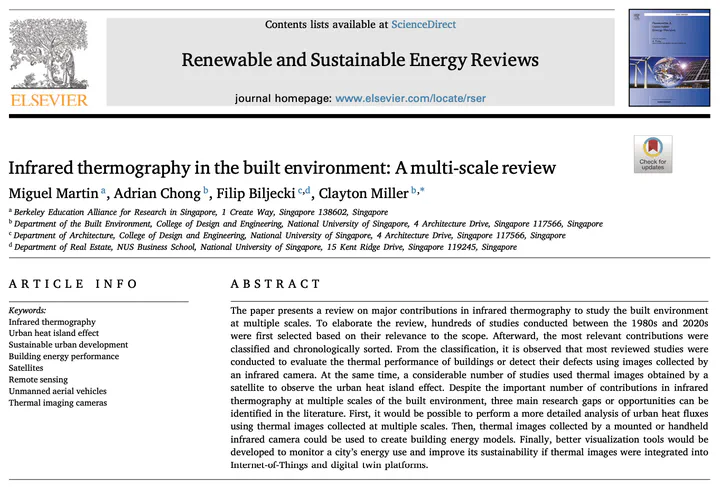
Abstract
The paper presents a review on major contributions in infrared thermography to study the built environment at multiple scales. To elaborate the review, hundreds of studies conducted between the 1980s and 2020s were first selected based on their relevance to the scope. Afterward, the most relevant contributions were classified and chronologically sorted. From the classification, it is observed that most reviewed studies were conducted to evaluate the thermal performance of buildings or detect their defects using images collected by an infrared camera. At the same time, a considerable number of studies used thermal images obtained by a satellite to observe the urban heat island effect. Despite the important number of contributions in infrared thermography at multiple scales of the built environment, three main research gaps or opportunities can be identified in the literature. First, it would be possible to perform a more detailed analysis of urban heat fluxes using thermal images collected at multiple scales. Then, thermal images collected by a mounted or handheld infrared camera could be used to create building energy models. Finally, better visualization tools would be developed to monitor a city’s energy use and improve its sustainability if thermal images were integrated into Internet-of-Things and digital twin platforms.